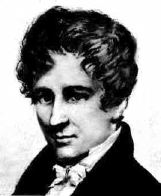

Niels Abel's life was dominated by poverty. He was taught by his father until he was 13, when he was sent to the Cathedral School in Christiania. Uninspired by the poor school, he proved a rather ordinary pupil with some talent for mathematics and physics until Holmboe joined the school in 1817. Abel began to study university level mathematics texts, and within a year of Holmboe's arrival Abel was reading the works of Euler, Newton, Lalande, d'Alembert, Lagrange, and Laplace.
When his father died, there was no money to allow Abel to complete his education, and he now had the responsibility of supporting his mother and family. Holmboe was able to help Abel gain a scholarship to remain at school, and Abel was able to enter the University of Christiania in 1821. There he published papers on functional equations and integrals. In one paper he gave the first solution of an integral equation.
Abel worked on and off on solving quintic equations, and in 1824 he proved the impossibility of
solving the general equation of the fifth degree in radicals. He also proved Abel's theorem, a vast generalization of Euler's relation for elliptic integrals. He continued working on elliptic functions, writing a paper that radically transformed the theory of elliptic integrals to the theory of elliptic functions by using their inverse functions.
Abel continued to pour out high quality mathematics as his poverty increased and his health continued to deteriorate. After Abel's death, an unpublished work on the algebraic solution of equations was found, including the theorem: "If every three roots of an irreducible equation of prime degree are related to one another in such a way that one of them may be
expressed rationally in terms of the other two, then the equation is soluble in radicals".
This result is essentially identical to one given by Galois in his famous memoir of 1830. In this same year, the Paris Academy awarded Abel and Jacobi the Grand Prix for their outstanding work.